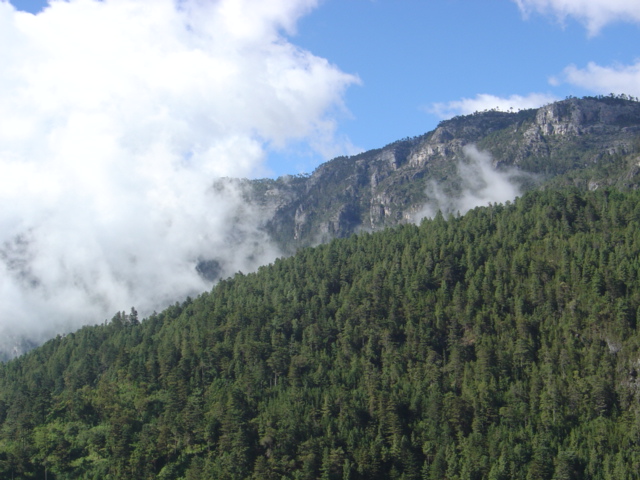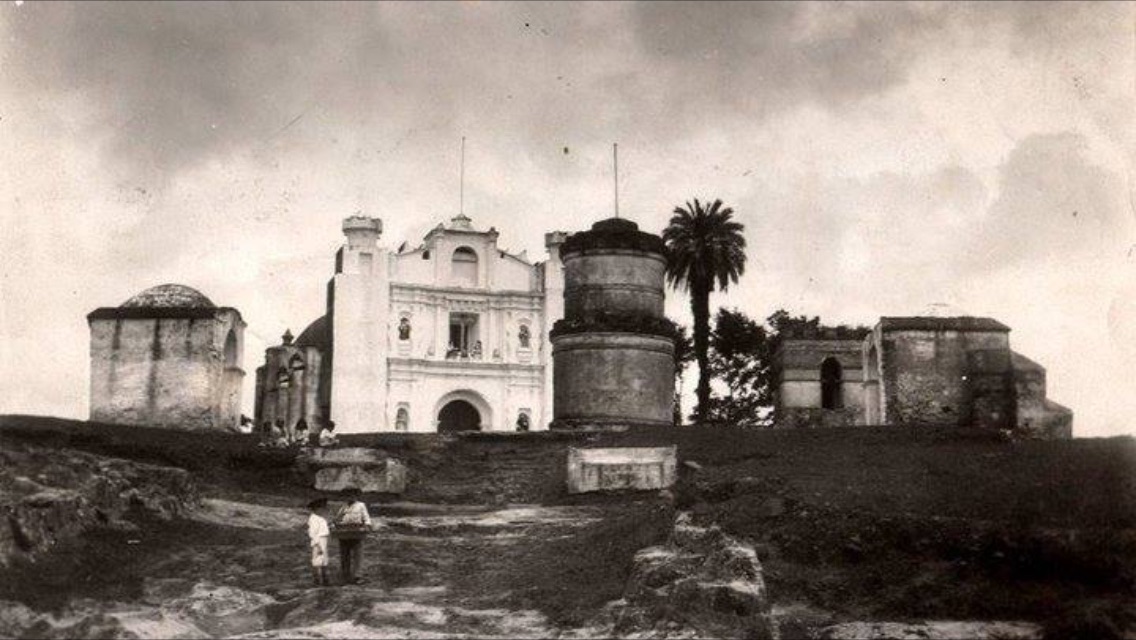|
Sakapultek Language
Sakapultek or Sacapulteco is a Mayan language very closely related to Kʼicheʼ language, Kʼicheʼ (Quiché). It is spoken by approximately 15,000 people in Sacapulas, Quiché Department, El Quiché department and in Guatemala City.The official 2002 census mentions a lower figure of 6.973 Sakapulteko speakers. See References External links The John William Dubois Collection Of Sacapultec Sound Recordingsat the Survey of California and Other Indian LanguagesCollections in the Archive of the Indigenous Languages of Latin America Agglutinative languages Mayan languages Indigenous languages of Central America Mesoamerican languages Languages of Guatemala {{IndigenousAmerican-lang-stub ... [...More Info...] [...Related Items...] OR: [Wikipedia] [Google] [Baidu] |
Guatemala
Guatemala ( ; ), officially the Republic of Guatemala ( es, República de Guatemala, links=no), is a country in Central America. It is bordered to the north and west by Mexico; to the northeast by Belize and the Caribbean; to the east by Honduras; to the southeast by El Salvador and to the south by the Pacific Ocean. With an estimated population of around million, Guatemala is the most populous country in Central America and the 11th most populous country in the Americas. It is a representative democracy with its capital and largest city being Nueva Guatemala de la Asunción, also known as Guatemala City, the most populous city in Central America. The territory of modern Guatemala hosted the core of the Maya civilization, which extended across Mesoamerica. In the 16th century, most of this area was conquered by the Spanish and claimed as part of the viceroyalty of New Spain. Guatemala attained independence in 1821 from Spain and Mexico. In 1823, it became part of the Fe ... [...More Info...] [...Related Items...] OR: [Wikipedia] [Google] [Baidu] |
Quiché Department
Quiché () is a department of Guatemala. It is in the heartland of the K'iche' (Quiché) people, to the north-west of Guatemala City. The capital is Santa Cruz del Quiché. The word K'iche comes from the language of the same name, which means "many trees". Population Quiché has historically been one of the most populous departments of Guatemala. At the 2018 census it had a population of 949,261. Maya people, Mayans account for 88.6% of the department's population. K'iche' people are the largest Mayan ethnic group in the department, and account for 65.1% of the total population. The department is named after them. While most of its indigenous population speaks the K'iche' language, K'iche' (Quiché) language, other Mayan languages spoken in the department are Ixil language, Ixil (Santa Maria Nebaj, Nebaj - Chajul - San Juan Cotzal, Cotzal area), Uspantek language, Uspantek (Uspantán area), Sakapultek language, Sakapultek (Sacapulas area), as well as Poqomchi' language, Poqomc ... [...More Info...] [...Related Items...] OR: [Wikipedia] [Google] [Baidu] |
Sakapultek People
The Sakapultek are a Maya people in Guatemala, located in the municipality of Sacapulas. The Sakapultek language is closely related to K'iche' K'iche', K'ichee', or Quiché may refer to: * K'iche' people of Guatemala, a subgroup of the Maya *K'iche' language, a Maya language spoken by the K'iche' people **Classical K'iche' language, the 16th century form of the K'iche' language *Kʼicheʼ ....See Gordon (2005): Notes References * * Indigenous peoples in Guatemala Maya peoples of Guatemala Mesoamerican cultures {{NorthAm-native-stub ... [...More Info...] [...Related Items...] OR: [Wikipedia] [Google] [Baidu] |
Mayan Languages
The Mayan languagesIn linguistics, it is conventional to use ''Mayan'' when referring to the languages, or an aspect of a language. In other academic fields, ''Maya'' is the preferred usage, serving as both a singular and plural noun, and as the adjectival form. form a language family spoken in Mesoamerica, both in the south of Mexico and northern Central America. Mayan languages are spoken by at least 6 million Maya people, primarily in Guatemala, Mexico, Belize, El Salvador and Honduras. In 1996, Guatemala formally recognized 21 Mayan languages by name,Achiʼ is counted as a variant of Kʼicheʼ by the Guatemalan government. and Mexico recognizes eight within its territory. The Mayan language family is one of the best-documented and most studied in the Americas. Modern Mayan languages descend from the Proto-Mayan language, thought to have been spoken at least 5,000 years ago; it has been partially reconstructed using the comparative method. The proto-Mayan language diver ... [...More Info...] [...Related Items...] OR: [Wikipedia] [Google] [Baidu] |
Quichean Languages
The (Greater) Quichean languages are a branch of the Mayan family of Guatemala. Languages *Qichean proper ** Kaqchikel (Cakchiquel) ** Tzʼutujil **Quiche–Achi: Kʼicheʼ (Quiché), Achiʼ *Qʼeqchiʼ (Kekchi) *Pokom: Poqomam, Poqomchiʼ * Uspantek * Sakapultek * Sipakapense See Mayan languages#Eastern branch for details. See also *Classical Kʼicheʼ Classical Kʼicheʼ was an ancestral form of today's Kʼicheʼ language (''Quiché'' in the older Spanish-based orthography), which was spoken in the highland regions of Guatemala around the time of the 16th-century Spanish conquest of Guatemala. Cl ... References Mayan languages {{na-lang-stub ... [...More Info...] [...Related Items...] OR: [Wikipedia] [Google] [Baidu] |
Academia De Lenguas Mayas De Guatemala
The Academia de Lenguas Mayas de Guatemala, or ALMG (English: ''Guatemalan Academy of Mayan Languages'') is a Guatemalan organisation that regulates the use of the 22 Mayan languages spoken within the borders of the republic. It has expended particular efforts on standardising the various writing systems used. Another of its functions is to promote Mayan culture, which it does by providing courses in the country's various Mayan languages and by training Spanish-Mayan interpreters. It was founded on 16 November 1990 as an autonomous state organization, following publication of the ''Ley de la Academia de Lenguas Mayas de Guatemala'', which had been passed by Congress the previous October. It is headquartered in Guatemala City's Zone 10, in what was formerly the official residence of the Minister of Defence at the time of the Civil War, during which the government pursued a policy of genocide against the country's indigenous Maya population. Orthography The ALMG have developed the ... [...More Info...] [...Related Items...] OR: [Wikipedia] [Google] [Baidu] |
Mayan Language
Mayan most commonly refers to: * Maya peoples, various indigenous peoples of Mesoamerica and northern Central America * Maya civilization, pre-Columbian culture of Mesoamerica and northern Central America * Mayan languages, language family spoken in Mesoamerica and northern Central America * Yucatec Maya language, language spoken in the Yucatán Peninsula and northern Belize Mayan may also refer to: * Mayan, Semnan, Iran * Mayan stage, geological period that occurred during the end of the Middle Cambrian * Mayan (band), a Dutch symphonic death-metal band * Mayan (software) See also * List of Mayan languages * Maayan (other) * ''Mayan Renaissance'' * Mayan-e Olya, East Azerbaijan * Mayan-e Olya, Razavi Khorasan * Mayan-e Sofla, East Azerbaijan * Mayan-e Sofla, Razavi Khorasan * Mayan-e Vosta * Mayian Maiyan, also known as Maiyun, Haldi, or Ubtan, is the term used for the preparation ceremony one day before Punjabi wedding traditions, Punjabi weddings of India and Pa ... [...More Info...] [...Related Items...] OR: [Wikipedia] [Google] [Baidu] |
Kʼicheʼ Language
Kʼicheʼ (, also known as among its speakers), or Quiché (), is a Mayan language of Guatemala, spoken by the Kʼicheʼ people of the central highlands. With over a million speakers (some 7% of Guatemala's population), Kʼicheʼ is the second most widely-spoken language in the country, after Spanish. It is also the most widely-spoken indigenous American language in Mesoamerica. The Central dialect is the most commonly used in media and education. Despite a low literacy rate, Kʼicheʼ is increasingly taught in schools and used on the radio. The most famous work in the Classical Kʼicheʼ language is the ''Popol Vuh'' (''Popol Wuʼuj'' in modern spelling). Dialects Kaufman (1970) divides the Kʼicheʼ complex into the following five dialects, with the representative municipalities given as well (quoted in Par Sapón 2000:17): ;East *Joyabaj *Zacualpa *Cubulco *Rabinal *San Miguel Chicaj ;West *Nahualá *Santa Clara La Laguna *Santa Lucía Utatlán *Aldea Argueta, Sololá * ... [...More Info...] [...Related Items...] OR: [Wikipedia] [Google] [Baidu] |
Sacapulas
Sacapulas is a town and municipality in the Guatemalan department of El Quiché. History Pre Hispanic era Worried about the defection of the aj K’ub’ul family chief -who had taken his family away in order to look for fertile and, above all, pacific land-, the K’iche’ king sent a group of soldiers to control every single movement of them. He was afraid that the aj K'ub'ul would look for reinforcements from other ethnic group in the area to form a strong army and then attack the k'iche's. The warriors settled to the east of the aj K’ub’ul and since the latter had moved away to look for peace and tranquility, they were a very peaceful community. And that is exactly what the warriors inform the K’iche’ king, reassuring him by telling that he should not worry about the exiled group, as they were really peaceful. As time went by, the k'iche' warriors realized that the aj K'ub'ul life was very different from the one they were used to have under the ruling of their ... [...More Info...] [...Related Items...] OR: [Wikipedia] [Google] [Baidu] |
Guatemala City
Guatemala City ( es, Ciudad de Guatemala), known locally as Guatemala or Guate, is the capital and largest city of Guatemala, and the most populous urban area in Central America. The city is located in the south-central part of the country, nestled in a mountain valley called Valle de la Ermita ( en, Hermitage Valley). The city is the capital of the Municipality of Guatemala and of the Guatemala Department. Guatemala City is the site of the Mayan city of Kaminaljuyu, founded around 1500 BC. Following the Spanish conquest, a new town was established, and in 1776 it was made capital of the Kingdom of Guatemala. In 1821, Guatemala City was the scene of the declaration of independence of Central America from Spain, after which it became the capital of the newly established United Provinces of Central America (later the Federal Republic of Central America). In 1847, Guatemala declared itself an independent republic, with Guatemala City as its capital. The city was originally located ... [...More Info...] [...Related Items...] OR: [Wikipedia] [Google] [Baidu] |
SIL International
SIL International (formerly known as the Summer Institute of Linguistics) is an evangelical Christian non-profit organization whose main purpose is to study, develop and document languages, especially those that are lesser-known, in order to expand linguistic knowledge, promote literacy, translate the Christian Bible into local languages, and aid minority language development. Based on its language documentation work, SIL publishes a database, ''Ethnologue'', of its research into the world's languages, and develops and publishes software programs for language documentation, such as FieldWorks Language Explorer (FLEx) and Lexique Pro. Its main offices in the United States are located at the International Linguistics Center in Dallas, Texas. History William Cameron Townsend, a Presbyterian minister, founded the organization in 1934, after undertaking a Christian mission with the Disciples of Christ among the Kaqchikel Maya people in Guatemala in the early 1930s.George Thomas ... [...More Info...] [...Related Items...] OR: [Wikipedia] [Google] [Baidu] |

